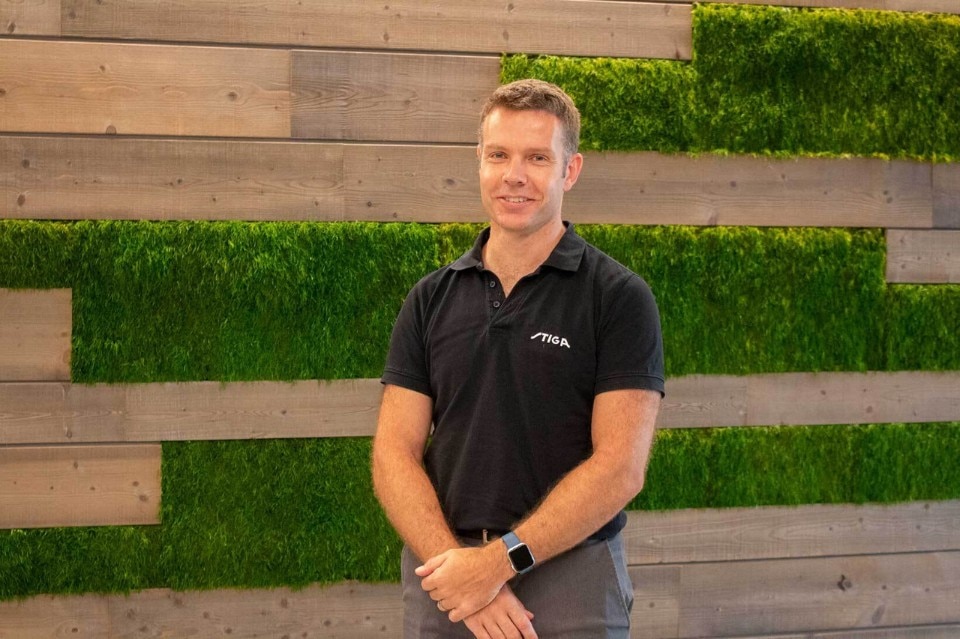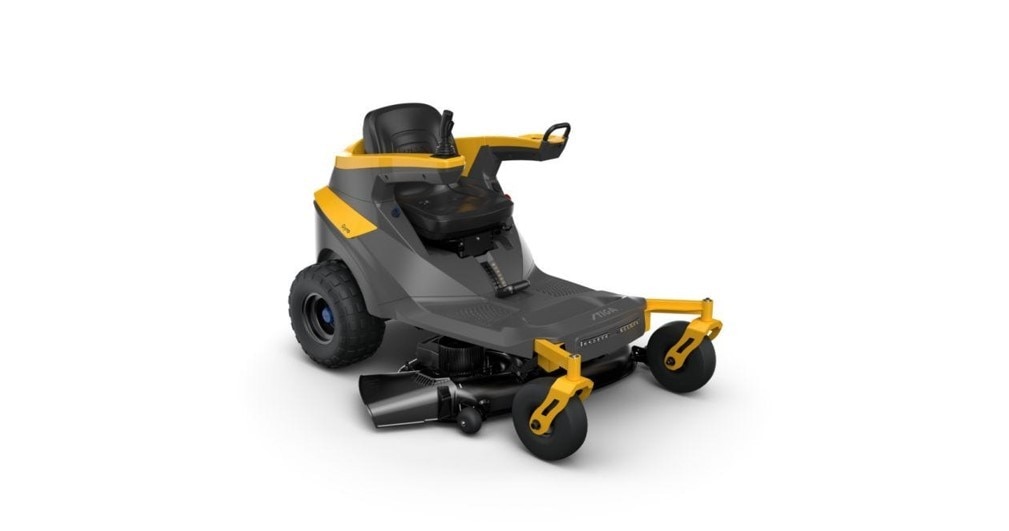In the heart of the Treviso region of the Veneto countryside, two robot lawnmowers endlessly chase each other, slowly but constantly tracing patterns that may seem random to the human eye. They leave behind meticulously shaved trails on the large, impeccably manicured lawn – even to the human eye − welcoming visitors to the Stiga headquarters, a leading garden care company. The recently built headquarters is a modern structure with vast windows. In 2017, a year before its construction, the company decided to rebrand from Global Garden Products to Stiga Group, emphasizing its premium brand. Founded in Sweden by visionary entrepreneur Stig Hjelmquist, Stiga celebrates its 90th anniversary this year.
Behind the expansive building, overlooking a hill where more robot lawnmowers navigate their tracks, fox grape climbs the walls in the off-season, giving way to jasmine in the spring. During lunch breaks, the bouncing of a ping pong ball echoes through the halls, a nostalgic reminder of when Stiga − now under Stiga Group, back then, before its split and acquisition, it had nothing to do with gardening machines − was an eclectic company producing the table tennis paddles that made the brand famous.

Approximately 800 people work at the expansive headquarters in Castelfranco Veneto, the main hub of Stiga Group, with additional sites in Slovakia and China. Covering over 30,000 square meters, 5,000 of those are allocated to offices and the research and development department, while the rest is a state-of-the-art factory. And what a factory it is. Everything here is automated. A sophisticated wireless system adjusts screwdriver settings in real time, enabling a “flexible plant with a flexible structure” that is both agile and modular. This setup allows production to adapt to seasonal demands − after all, gardens follow nature's cycles, and Stiga synchronizes with them. The high-tech, mid- to high-end products of the group are crafted here in Castelfranco: a significant portion of the plant focuses on batteries, a crucial component for the autonomous robots, the “lawn Roombas” for which Stiga is a leading global manufacturer. Battery and automation technologies are pivotal here, akin to those in electric car or drone companies.
Entering the Castelfranco plant feels like stepping into a futuristic land that doesn’t need any futurist frill to look ahead of everything and everyone else. Instead, the environment is dominated by geometry, automation, and control. Minimalism reigns, a clear legacy of the company's Scandinavian roots. Everything is clean, precise, and orderly.

Tractors and lawnmowers are manufactured here. In the R&D rooms, Stiga's products are mistreated in every possible way, especially the robots, which are tortured and pushed to their limits, tipped over, blasted, and even hit with bullet-like projectiles to test their resilience. Nature might be gentler, but not by much. Occasionally, you might catch a glimpse of someone from the R&D team taking notes on a computer before disappearing around a corner. Walking through the facility, you’ll encounter carts with neatly stacked yellow robot shells, resembling cafeteria trays, while walls throughout the company are decorated with inspirational quotes from luminaries like Albert Einstein and Steve Jobs.
The environment is dominated by geometry, automation, and control. Minimalism reigns, a clear legacy of the company's Scandinavian roots. Everything is clean, precise, and orderly.
In a spacious, bright meeting room on the ground floor overlooking the lawn − with ever-present lawn-mowing robots parading beyond the glass windows − I met James Cameron, Stiga's Design and Innovation Director, a towering Scotsman boasting rich experience and ideas as sharp and structured as his jawline. Cameron has infused Stiga's design with innovation, lightness, and ease of use, in addition to elements constantly inspired by Scandinavian design principles. When asked about his design influences, he doesn't cite rare Memphis editions but instead speaks with genuine admiration about “certain kitchen utensils.”

We had a long conversation about how electrification is revolutionizing the gardening world, enabling the creation of lighter, cleaner, automated tools that don’t require fuel but, for this reason, they need to be reimagined. Cameron is a detail and functionality enthusiast: while car designers might vaguely discuss how EV body designs can be freed from certain limitations, Cameron describes, step by step, how a battery-powered handheld tool should be rebalanced.
Cameron is behind one of Stiga's most intriguing products, the Gyro lawn tractor, which redefines human-machine interaction on this kind of vehicle in a seemingly futuristic way. “I’ve been here five years, and the key thing has been to connect design, engineering, and everything else,” he explains. His message is clear: gardening “is blooming.” Post-COVID, a growing segment of young people has rediscovered nature. Designing increasingly efficient, affordable, and safe gardening devices for them is more critical than ever.

The Trafic parquet collection: a new language for spaces
Designers Marc and Paola Sadler draw on now-extinct urban scenarios to create an original and versatile product for Listone Giordano.





















